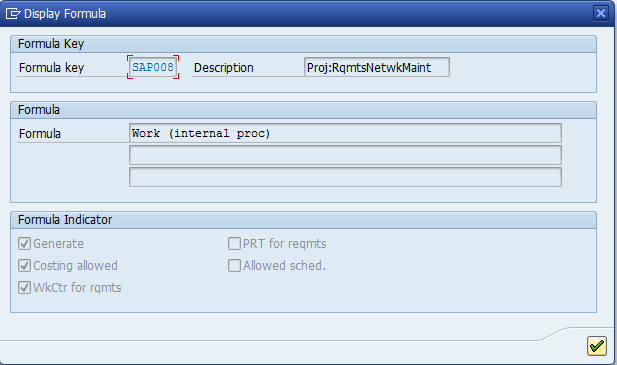A recent question put me on the path of talking about bills of materials. I’m always looking for a topic to write about, so this worked out well.
If you aren’t that familiar with BOM’s, this can seem pretty big. First, a BOM is a BOM, the usage define where it explodes and/or how it is used, but once you get inside of the BOM, they are all the same. So if you understand exactly how to add a material and recognize that each item has different flags, you are in good shape. When it comes to the BOM usage, much of the difference is in setting the item flags for if something is sales relevant, costing relevant, etc. So I wanted to talk about the different usages, at least the ones I’m familiar with.
If you go into transaction CS01 and do a pull down on the BOM usage, you will likely see a list something like the one listed below.
- 1 + . – . . – Production
- 2 . + – . . – Engineering/Design
- 3 . . – . . . Universal
- 4 – – + . . – Plant Maintenance
- 5 . . – . . + Sales and Distribution
- 6 . . – . + . Costing
- 7 . – – – . . Empties
- 8 – . – – – – Stability Study
- M . . . . . . External Munitions Display
For me, I typically use 1, 2, 3, 4 & 5. The others, I really haven’t needed in my travels. So let me give you the quick low down on these.
1 – Production: this is the BOM that will be used to build the product. On the items, it will set the Production relevant, which basically tells production orders to use this BOM to build the product. That in turn tells MRP what components to order and have available at the work center when production begins.
2 – Engineering/Design: this is the BOM used when you are prototyping or making something new. I have always used it to build the final production BOM, but didn’t want anyone mass producing something. Think of this as the BOM in progress. You aren’t complete, maybe you are still missing materials, or maybe the materials haven’t been extended to the proper plants yet. Either way, this BOM is a “not ready for prime time” list of components.
3 – Universal: I have been in some locations that only use a 3. It’s a catch all. it works for production, sales, plant maintenance, etc. Personally, I prefer to have different usages so I can vary what things look like, but if you are in environment where the BOM is identical for everything, then this is a great way to cut down on master data.
4 – Plant Maintenace: this is the BOM that is used for maintenance. Think of this as the spare part list, or components that may be needed to maintain the equipment after it is in use.
5 – Sales and Distribution: this is the BOM that will only explode on the sales order. It is not for production. This is common when you are dealing with a kit, or with variant configuration. If you want to type in a single material on a sales order, but have it list our 5 different assemblies, this how you do it 🙂
6 – Costing: never used this one… but it sets the costing relevant flag. I suppose this would be useful if you don’t want all the components included in the overall cost, or need different versions.
This is the quick and dirty explanation of the BOM usages I am familiar with.
Thanks for reading,








